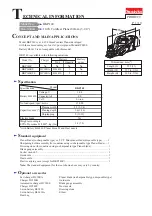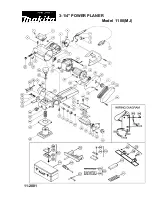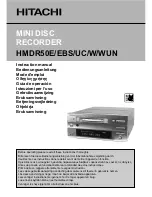
-26-
G0677 24" Planer/Sander
Variable Feed Rate Dial: Adjusts the feed rate
between 14 and 60 FPM.
Rear Stop Button: Immediately stops all electri-
cal power to the motors in the event of an emer-
gency and stops the sanding drum with an air-disc
brake.
Figure 28. Rear controls.
Variable Feed
Rate Dial
Rear Stop
Button
Adjusting Feed Rate
The dial attached to the side of the feed motor
cover (
Figure
28
) adjusts the feed rate of the
sander.
Cutterhead Adjustment Shaft (Figure 29:
Raises and lowers the spiral cutterhead above
the table and in relationship to the height of the
rear sanding drum. Use an adjustable wrench to
turn the shaft.
Cutterhead Lock Handle: Locks the cutterhead
in place so it will not move. Loosen to allow
cutterhead height adjustment. Lock after setting
cutterhead position.
Cutterhead Height Scale: Indicates the
cutterhead height relative to the sanding drum;
measured in 0.004" in (0.10mm) increments. We
recommend setting the cutterhead at 0mm for
most operations.
Figure 29. Planer cutterhead controls.
Adjustment Shaft
Lock Handle
Height Scale
Changing the Feed Belt Speed
1. Start the feed belt.
2.
Turn the dial clockwise to decrease the feed
rate and counterclockwise to increase it.
Note: Never adjust the feed rate dial unless
the feed belt is running or you can damage
the control.
Determining Ideal Feed Rates
Softwoods typically require a faster feed rate than
hardwoods; however, there is no definitive rule to
follow when determining the best feed rate. As a
general rule, always start with the slowest feed
rate and work your way up. We always recom-
mend testing the feed rate using scrap wood
similar to your workpiece. Be sure to monitor the
amperage meter (see
Page 28
) when adjusting
the feed rate. Decrease the feed rate if the load
begins to slow the motor RPM.
















































